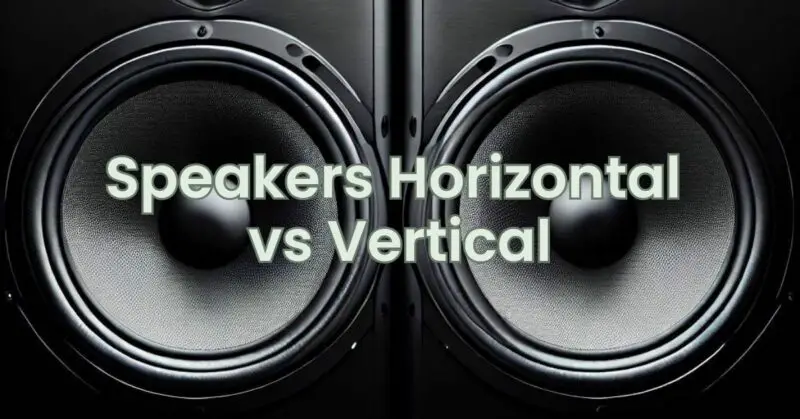The orientation of speakers, whether horizontal or vertical, can have an impact on the sound quality and overall listening experience. While most speakers are designed to be positioned vertically, there are scenarios where horizontal placement may be preferred or necessary. In this article, we will explore the considerations and implications of placing speakers horizontally versus vertically to help you make an informed decision based on your specific needs and setup.
Vertical Speaker Placement
- Preferred Design: Most speakers are designed with vertical placement in mind. This orientation allows for optimal driver alignment, with the tweeter positioned above the woofer. Vertical positioning helps maintain phase coherence, ensuring accurate sound reproduction and preserving the intended tonal balance.
- Sound Dispersion: When placed vertically, speakers tend to have a wider horizontal sound dispersion pattern, making them suitable for larger listening areas or scenarios where a broader sweet spot is desired. Vertical speakers can deliver a more consistent sound experience for listeners situated to the sides of the speakers, providing a balanced soundstage.
- Stability: Speakers are typically engineered with stability in mind when placed in a vertical position. They have a lower center of gravity, ensuring better stability and minimizing the risk of accidental tipping or vibrations that can impact sound quality.
Horizontal Speaker Placement
- Space Constraints: Horizontal speaker placement can be advantageous when dealing with limited space or specific installation requirements. For example, placing speakers below a TV screen or in a cabinet may necessitate horizontal orientation to fit within the available space.
- Center Channel Applications: In home theater setups, a horizontal center channel speaker is commonly used to reproduce dialogue and center-focused audio. It is designed to be placed horizontally, often below the screen, to ensure proper alignment with on-screen action and accurate sound localization for movie dialogues.
- Sound Directivity: Horizontal speaker placement may have a narrower vertical sound dispersion pattern. This can be useful in scenarios where you want to limit sound propagation to minimize sound reflections from floors or ceilings, or to direct the sound towards a specific listening area.
Considerations for Choosing the Orientation
- Speaker Design: The design and intended orientation of the speakers can play a significant role in their performance. It is generally recommended to follow the manufacturer’s guidelines regarding the preferred orientation for optimal sound reproduction.
- Room Acoustics: Consider the characteristics of your room, such as its size, shape, and the presence of reflective surfaces. The orientation of the speakers should be chosen to minimize unwanted reflections and maximize sound quality.
- Speaker Placement: The placement of speakers within the room can also affect their orientation. Factors such as the location of other audio equipment, furniture, and the listening position should be taken into account when determining the optimal orientation.
- Personal Preference: Ultimately, personal preference should guide your decision. Consider your listening habits, the type of content you enjoy, and the specific requirements of your setup. Experimenting with different orientations and carefully listening to the results can help you determine the orientation that best suits your preferences and audio requirements.
Conclusion
Choosing between horizontal and vertical speaker placement depends on various factors, including speaker design, room acoustics, and personal preferences. While vertical orientation is the standard for most speakers, horizontal placement can be advantageous in certain situations, such as center channel applications or when dealing with space constraints. Consider the impact on sound dispersion, stability, and directivity when making your decision. Experimentation and careful listening are key to finding the ideal orientation that delivers the best sound quality and an immersive listening experience for your specific setup.

